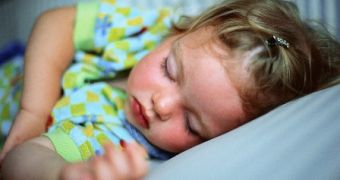A new research whose findings are to be published in the scientific journal SLEEP this coming April argues that children who suffer with obstructive sleep apnea (i.e. a form of sleep-disordered breathing) are prone to displaying various behavioral problems.
More precisely, it appears that young obstructive sleep apnea patients are likely to develop behavioral problems which fall into the category of symptoms associated with ADHD.
Furthermore, they might experience difficulties in terms of learning abilities and as far as their social skills are concerned.
The researchers now linking obstructive sleep apnea to ADHD, adaptive and learning problems reached their conclusions after analyzing the medical records of a total of 263 children who took part in an overnight sleep study carried out at the Tucson Children's Assessment of Sleep Apnea.
The children were either Hispanic or Caucasian.
Besides their having their sleeping patterns analyzed, these children, age 6 to 11, were made to undergo a series of tests whose purpose was that of collecting information concerning their behavioral patterns. EurekAlert writes that, in the aftermath of these investigations, it was concluded that children who suffer with incident sleep apnea were 4-5 time more likely to display behavioral problems at one point in their lives.
On the other hand, those affected by persistent sleep apnea were six times more likely to also experience changes in their behavioral patterns.
“This study provides some helpful information for medical professionals consulting with parents about treatment options for children with SDB [sleep-disordered breathing] that, although it may remit, there are considerable behavioral risks associated with continued SDB,” argued Michelle Perfect, PhD.
“School personnel should also consider the possibility that SDB contributes to difficulties with hyperactivity, learning and behavioral and emotional dysregulation in the classroom,” the researcher wished to emphasize.
Given the findings of this research, the specialists recommended that parents whose children are affected by sleep apnea reach out for professional help.
As Michelle Perfect puts it, “Even though SDB appears to decline into adolescence, taking a wait and see approach is risky and families and clinicians alike should identify potential treatments.”

 14 DAY TRIAL //
14 DAY TRIAL //